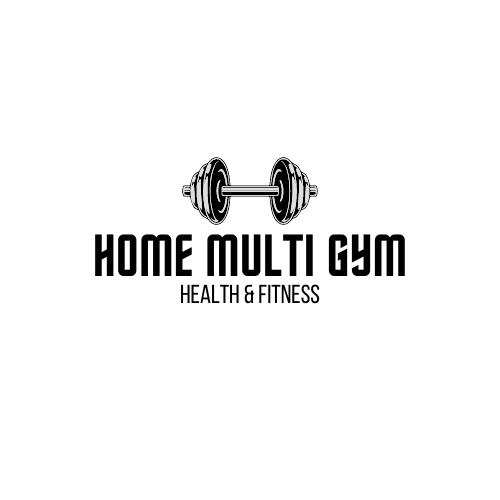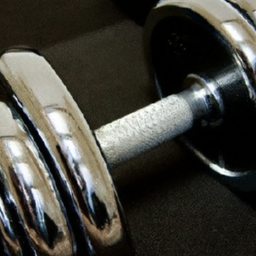Have you ever wondered how often you should inspect and maintain your home multi-gym for optimal performance and safety? It’s an important question to consider, especially if you want to get the most out of your workouts while staying safe. In this article, we will delve into the topic and provide you with valuable information on when and how to inspect and maintain your home multi-gym. You’ll learn about the key components to inspect, the signs to look out for, and the best practices to ensure your multi-gym is in top condition. So, if you’re ready to take your home workouts to the next level and ensure your safety, keep reading and get ready to become an expert in maintaining your home multi-gym!
Importance of Regular Inspections and Maintenance
When it comes to owning a home multi-gym, regular inspections and maintenance are key to ensuring optimal performance and promoting safety. Not only can it prevent costly repairs in the long run, but it also enhances the overall user experience. In this article, we will explore the frequency of inspections, components to inspect, maintenance procedures, common signs of wear and tear, necessary tools and equipment, safety precautions, and the benefits of regular maintenance. By following these guidelines, you can maintain your home multi-gym efficiently and effectively.
Frequency of Inspections
Initial Inspection
Before you start using your newly purchased home multi-gym, it is important to conduct an initial inspection. This will ensure that all the components are in place, properly assembled, and functioning correctly. Check for any visible damage, loose parts, or missing bolts. Read the instruction manual thoroughly to understand the operation and maintenance guidelines specific to your multi-gym.
Regular Scheduled Inspections
Regularly scheduled inspections should be conducted to catch any potential issues and prevent them from escalating into major problems. It is recommended to inspect your home multi-gym at least once every month. This will help to identify any signs of wear and tear, loose or unstable parts, or any abnormalities in its performance. By addressing these issues early on, you can avoid accidents and costly repairs down the line.
Post-Workout Inspections
After a vigorous workout session, it is important to inspect your multi-gym for any signs of stress or damage. High-intensity workouts can put strain on the equipment, and regular inspections after each session can help catch any issues that may have occurred during the workout. Look out for any strange noises, loose parts, or changes in resistance levels.
Seasonal Inspections
Seasonal inspections are particularly crucial for home multi-gyms that are exposed to extreme temperatures or humidity. These conditions can cause corrosion, rust, or damage to electrical components. As the seasons change, take the time to inspect and maintain your multi-gym to ensure its longevity and optimal performance.
Components and Areas to Inspect
Frame and Structure
The frame and structure of your home multi-gym should be inspected for any cracks, bends, or signs of weakness. Check for stability by ensuring that all the joints and connections are tight and secure. Any deformities or damage to the frame can compromise the safety and performance of the equipment.
Cables and Pulleys
Inspect the cables and pulleys for any signs of fraying, kinks, or wear. Check that the cables are properly aligned and running smoothly through the pulleys. Any abnormalities in the cables and pulleys can affect the resistance and overall functionality of the multi-gym.
Weights and Attachments
Examine the weights and attachments for any visible damage or signs of wear. Ensure that the weights are securely fastened and balanced. Loose or damaged weights can pose a safety risk or result in an uneven workout experience.
Bolts and Fasteners
Inspect all bolts and fasteners for tightness and proper alignment. Loose or missing bolts can lead to instability and compromise the overall safety of your multi-gym. Use the appropriate tools to tighten any bolts that may have come loose during use.
Upholstery and Padding
Check the upholstery and padding for any tears, rips, or signs of wear. Damaged upholstery can be uncomfortable during workouts and may need to be repaired or replaced. Inspect the padding to ensure it is evenly distributed and provides adequate support.
Electrical and Digital Components
If your home multi-gym has electrical or digital components, such as monitors or timers, inspect them for any malfunctions or damage. Check the power cords for any frays or exposed wires. Make sure all electrical components are functioning properly to avoid any safety hazards or interruptions in your workout routine.
Flooring and Surrounding Area
Inspect the flooring and the area surrounding your multi-gym for any potential hazards. Make sure the flooring is level and stable to prevent any accidents or injuries during your workouts. Remove any objects or obstacles that may obstruct your movements or pose a tripping hazard.
Maintenance Procedures
Cleaning and Sanitizing
Regular cleaning and sanitizing of your home multi-gym is crucial for maintaining its performance and hygiene. Use a mild detergent or cleaning solution to wipe down the surfaces, upholstery, and handles. Pay special attention to areas that come into contact with sweat to prevent the buildup of bacteria and unpleasant odors.
Lubrication and Greasing
Proper lubrication of the moving parts, such as cables and pulleys, is essential to ensure smooth and efficient operation. Apply a small amount of lubricant or grease as recommended by the manufacturer. This will help reduce friction, prevent excessive wear, and extend the lifespan of these components.
Tightening and Adjusting
Regularly check and tighten all bolts, fasteners, and connections to maintain stability and safety. Make sure everything is properly aligned and adjusted according to the manufacturer’s instructions. A loose or misaligned component can impact the overall performance of your home multi-gym.
Replacing Worn-Out Parts
If you notice any signs of significant wear and tear or damage to any component of your multi-gym, it is important to replace that part immediately. Operating your multi-gym with damaged or worn-out parts can compromise the safety and performance of the equipment. Contact the manufacturer or a professional for appropriate replacement parts.
Electrical System Maintenance
If your home multi-gym runs on electricity, it is essential to properly maintain the electrical system. Regularly check the power cords for any frays or exposed wires, and replace them if necessary. Avoid overloading electrical circuits and ensure that all the electrical connections are secure.
Common Signs of Wear and Tear
Regular inspections will help you identify any signs of wear and tear in your home multi-gym. Here are some common indicators that may require attention:
Squeaking or Grinding Noises
Unusual noises during the operation of your equipment may be a sign of worn-out or poorly lubricated components. Inspect and lubricate the affected parts to reduce friction and noise.
Loose or Unstable Parts
If you notice any loose or unstable parts during a workout or inspection, tighten them immediately. A loose component can compromise the stability and safety of your multi-gym.
Uneven Resistance
A sudden change in resistance levels or uneven resistance during a workout could indicate an issue with the cables, pulleys, or weights. Inspect and adjust these components to maintain consistent resistance.
Damaged Upholstery
Tears, rips, or worn-out upholstery can affect the comfort and support provided by your multi-gym. Repair or replace damaged upholstery to ensure an enjoyable workout experience.
Malfunctioning Electronics
If any electrical or digital components are not functioning properly, such as monitors or timers, they may require attention. Check the connections and consult the manufacturer for troubleshooting steps or repairs.
Corrosion or Rust
Inspect the metal components of your multi-gym for any signs of corrosion or rust. Address these issues promptly to prevent further damage and ensure the longevity of your equipment.
Tools and Equipment for Maintenance
To properly inspect and maintain your home multi-gym, you will need the following tools and equipment:
Wrenches and Screwdrivers
These basic tools will be necessary for tightening bolts, adjusting parts, and making small repairs.
Grease and Lubricants
Invest in appropriate lubricants or grease to keep the moving parts of your multi-gym running smoothly.
Cleaning Solutions and Cloths
Use mild detergents or cleaning solutions to clean the surfaces and upholstery of your multi-gym. Soft cloths or sponges will be useful for wiping down the equipment.
Replacement Parts
Keep a stock of replacement parts, such as cables, bolts, or upholstery, to quickly address any issues that may arise during an inspection.
Voltage Testers or Multimeters
These tools will be necessary for checking the electrical components of your multi-gym. Use them to ensure proper electrical connections and functionality.
Safety Precautions
When inspecting and maintaining your home multi-gym, it is essential to prioritize safety. Here are some important safety precautions to keep in mind:
Powering Off and Disconnecting
Whenever you are inspecting or maintaining your multi-gym, make sure it is properly powered off and disconnected from any electrical sources. This will prevent any accidental electrical shocks while working on the equipment.
Using Protective Gear
Wear appropriate protective gear, such as gloves and safety glasses, when working on your multi-gym. This will protect you from potential injuries or accidents.
Following Instruction Manuals
Always refer to the instruction manual provided by the manufacturer for specific maintenance procedures and guidelines. Follow their recommendations to ensure the safety and longevity of your multi-gym.
Seeking Professional Help When Needed
If you are unsure about any maintenance procedures or encounter significant issues with your multi-gym, do not hesitate to seek professional help. Manufacturers or certified technicians will have the expertise to address complex problems or provide guidance on proper maintenance.
Benefits of Regular Maintenance
Regular inspections and maintenance of your home multi-gym offer several benefits:
Prolonged Lifespan of the Multi-gym
By maintaining and addressing any issues promptly, you can extend the lifespan of your multi-gym. Regular maintenance ensures that the equipment remains in optimal condition, reducing the likelihood of major breakdowns or premature wear.
Optimal Performance and Functionality
Regularly inspecting and maintaining your multi-gym helps to ensure its optimal performance. By addressing any wear and tear, lubricating the moving parts, and maintaining a consistent resistance, you can maximize the effectiveness of your workouts.
Reduced Risk of Accidents and Injuries
Regular maintenance plays a crucial role in promoting the safety of your home multi-gym. By regularly inspecting and addressing any loose or unstable parts, you can reduce the risk of accidents and injuries during your workouts.
Enhanced User Experience
A well-maintained multi-gym provides a more enjoyable and efficient workout experience. Smooth and quiet operation, properly functioning electronics, and comfortable upholstery contribute to a positive user experience.
Cost-Effective Maintenance Tips
Maintaining your home multi-gym does not have to be expensive. Here are some cost-effective tips to keep in mind:
Performing DIY Maintenance
Many maintenance procedures can be performed by the owner themselves, without the need for professional assistance. Regular cleaning, lubrication, and minor adjustments can be easily done with the right tools and knowledge.
Scheduling Preventive Maintenance
By following a regular inspection schedule and addressing any issues promptly, you can prevent major breakdowns and costly repairs in the future. Preventive maintenance is key to maintaining the overall performance and longevity of your multi-gym.
Investing in Quality Materials and Parts
When purchasing a home multi-gym or replacement parts, prioritize quality over cost. Investing in high-quality materials and parts will ensure the durability and reliability of your equipment in the long run.
Conclusion
Regular inspections and maintenance are crucial for maintaining the optimal performance and safety of a home multi-gym. By following the recommended frequency and procedures outlined in this article, you can ensure the longevity of your equipment while reducing the risks of accidents and expensive repairs. Prioritizing maintenance not only enhances the overall user experience but also promotes a safe and efficient workout environment. With the right tools, knowledge, and commitment, everyone can enjoy the benefits of a well-maintained home multi-gym.

